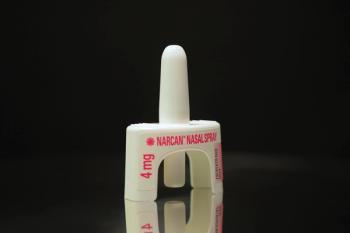
Opill Marks a New Era for Birth Control Access
Stephanie Sober, MD, MSHP, shares insights into the research that led to Opill’s FDA approval and its implications for women’s access to contraception.
A century ago, discussing birth control could land you in jail. Today, it’s readily available on pharmacy shelves. Although stigma persists, significant progress has been made in contraception. But how did we get here?
Even before the advent of the modern pill, The Comstock Act of 1873 set a precedent for condemning contraception. The law prohibited the mailing of any “obscene” materials—a category that included birth control pills—as well as any written material about the subject.1
Named after Anthony Comstock, an anti-vice activist, the law had a profound impact on reproductive rights. Mary Ziegler, a law professor at the University of California, Davis, and an expert in the politics of reproduction, history, and conservatism in the US, said in an interview with ABC News, Comstock “would boast about how many people [had] been arrested, and how many items he confiscated, and how many people he had driven to commit suicide,” on the legislation’s behalf.2
According to reports from Planned Parenthood, 160 tons of literature, including birth control pamphlets, were confiscated and destroyed under the law.3 This lack of access to information contributed to a limited understanding of reproductive anatomy, as well as established an early way of thinking that equated birth control with immorality.
The Comstock Act inspired similar state laws that extended these restrictions to include the use of contraceptives, as well. In 1879, Connecticut passed a law that banned the use of any drug, medical device, or other instrument in furthering contraception. It was not reversed until 1965, when the Supreme Court decided the law violated the right to marital privacy—the decision to legalize birth control for unmarried couples was still years away.4
Despite widespread moral objections to
In 1957, following clinical trial success,5 the FDA approved the use of the pill to regulate menstruation. In 1960—after 3 additional years of deliberation—the agency approved the pill as an oral contraceptive.6 The medicine experienced a swift uptake: in just 5 years after its approval, 1 in 4 married women in the US under the age of 45 had used it.5
Throughout the years, birth control has gained social, political, and cultural acceptance. In the 1960s, it played a role in shaping a more liberal sexual culture.1 By 1982, its impact on society was evident, with 60% of women of reproductive age participating in the workforce.7 The Economist, in 1993, named the birth control pill one of the 7 wonders of the modern world.5
Cut to today: The pill has become a widely accepted and effective contraceptive, with additional benefits such as reducing menstrual cramps, lightening periods, and relieving symptoms of premenstrual syndrome.8 Millions of women rely on it. But while acceptance of the contraceptive has largely been achieved, a new challenge has emerged: ensuring the pill’s accessibility for all women.
A 2016 survey recorded that almost 30% of women of childbearing age experience problems obtaining a birth control prescription or refills.9 These challenges include lack of insurance, not having a regular doctor, and logistical barriers such as scheduling appointments, taking time off work, finding child care, and transportation.
Such obstacles became the impetus for researchers at pharmaceutical company Perrigo to develop the first over-the-counter (OTC) birth control pill in the US—a medicine that, according to the Free the Pill agency, more than 100 countries had already adopted—called Opill.10 The first step was gathering evidence that women could determine their suitability for birth control without the assistance of a health care provider.
For a first-in-class prescription-to-OTC switch, Stephanie Sober, MD, MSHP, global director of medical affairs for women’s health at Perrigo and investigator on the research, had to “do all the steps.” This included following a standardized and rigorous regulatory process, starting with a Drug Facts label-comprehension phase.
“It’s really an iterative process where you test the [label] template with consumers and then go back and see the places where they maybe didn’t understand quite as well,” said Sober. “Then, you try to make it more easily understandable and go back and test it again. You keep doing that and honing the label until you get to the point where you feel as though it is well understood by the consumers that you’re trying to target.”
Next comes the self-selection phase, whereby participants are asked to read the Drug Facts label and determine if the medication is suitable for their needs. If they choose to proceed, they are given the product to use at home, relying solely on the label for guidance. Investigators monitored participants’ use of the medication during this period.
“We found—not all that surprisingly—people can do this on their own,” said Sober. “Since the directions for taking Opill are not all that complicated—they’re just to take 1 pill at the same time every day—we found that people really were able to do this and use the product appropriately without the involvement of a health care provider. People did it actually really, really, well.” On 97% of the days in the trial, participants either appropriately took their pill or took appropriate mitigating action if they missed their pill.
Opill gained FDA approval on July 13, 2023.11 Now, it’s available at retailers, grocery stores, online, and at pharmacies, including major chains CVS and Walgreens.12
Sober says that the availability of Opill means many different things. While it doesn’t change the process for people with access to the health care system and a preferred provider, it does expand contraceptive options for patients and health care professionals.
However, the real impact lies in its accessibility for the approximately 19 million women living in contraceptive deserts.13 For these individuals, Opill offers a more effective birth control method than what is typically found in the pharmacy. According to Sober, even with all the contraception methods that were previously available, almost half of the 6 million pregnancies that occur in the US each year are unintended.
“When you think back to what was previously available, it’s things like condoms and spermicides, and those unfortunately fall into the less effective contraceptive methods,” said Sober. “So now we’re giving folks who don’t have that access to the health care system increased options and freedom to choose a new option.”
Opill’s availability also addresses the lingering shame and stigma surrounding birth control. Religious and moral beliefs that view birth control as sinful or immoral, traditional gender roles that place the burden of contraception on women, and cultural taboos surrounding the pill act as barriers for modern-day women seeking the medicine.
What’s more, the current reproductive landscape further complicates women’s ability to obtain contraception. More than half of the states in the US have banned abortion in its entirety, creating a climate where reproductive rights are under threat.14 And just recently, anti-abortion activists have started citing the Comstock Act—the same law that banned the distribution of birth control through the mail—to justify further restrictions, as it also outlaws mailing “every article or thing designed, adapted, or intended for producing abortion.”15
In the face of these obstacles, Sober says education is key: “Hopefully, by providing [people] with a new option where they can avoid some of those barriers, but also trying to promote people getting educated about their reproductive health and contraception more generally, we can help to tamp down some of that stigma that does exist.”
Ultimately, Opill has ushered in a new era of
“The more [contraceptive] options [people] have, and the easier access [people] have, the more likely people are to find something that works for them and to be able to continue it,” she said.
READ MORE:
Are you ready to elevate your pharmacy practice? Sign up today for our
References
1. Liao PV, Dollin J. Half a century of the oral contraceptive pill: historical review and view to the future. Can Fam Physician. 2012;58(12):e757-e760.
2. Doshi J. What is the Comstock Act? The 151-year-old law mentioned in SCOTUS abortion pill case. ABC News. March 26, 2024. Accessed September 19, 2024. https://abcnews.go.com/Politics/what-is-comstock-act-supreme-court-abortion-pill-case/story?id=108395444
3. Laguens D. Zombie Comstock Law threatens abortion…and much more. Planned Parenthood. April 11, 2024. Accessed September 19, 2024. https://www.plannedparenthoodaction.org/blog/zombie-comstock-law-threatens-abortion-and-much-more
4. Romaine J. Single women were given the right to birth control 50 years ago today. The Hill. March 22, 2022. Accessed September 19, 2024. https://thehill.com/changing-america/respect/equality/599274-single-women-were-given-the-right-to-birth-control-50-years
5. The birth control pill a history. Fact sheet. Planned Parenthood. Accessed August 29, 2024. https://www.plannedparenthood.org/files/1514/3518/7100/Pill_History_FactSheet.pdf
6. Junod SW. FDA’s approval of the first oral contraceptive, Enovid. FDA. Accessed September 19, 2024. https://www.fda.gov/media/110456/download
7. A timeline of contraception. Fact sheet. PBS. Accessed September 19, 2024. https://www.pbs.org/wgbh/americanexperience/features/pill-timeline/
8. Schindler AE. Non-contraceptive benefits of oral hormonal contraceptives. Int J Endocrinol Metab. 2013;11(1):41-47. doi:10.5812/ijem.4158
9. Grindlay K, Grossman D. Prescription birth control access among U.S. women at risk of unintended pregnancy. J Womens Health (Larchmt). 2016;25(3):249-254. doi:10.1089/jwh.2015.5312
10. OTC birth control pill access world map. Fact sheet. Free the Pill. Accessed September 19, 2024. https://freethepill.org/otc-access-world-map
11. FDA approves first nonprescription daily contraceptive. News release. FDA. July 13, 2023. Accessed September 19, 2024. https://www.fda.gov/news-events/press-announcements/fda-approves-first-nonprescription-daily-oral-contraceptive
12. Howard J. First OTC birth control pill in the US now available. CNN. April 1, 2024. Accessed September 19, 2024.
13. Contraceptive deserts. Fact sheet. Power to Decide. Accessed September 19, 2024. https://powertodecide.org/what-we-do/contraceptive-deserts
14. Choi A, Cole D. See where abortions are banned and legal—and where it's still in limbo. CNN. August 21, 2024. Accessed September 19, 2024. https://www.cnn.com/us/abortion-access-restrictions-bans-us-dg/index.html
15. Kurtzleben D. Why anti-abortion advocates are reviving a 19th century sexual purity law. NPR. April 10, 2024. Accessed September 19, 2024. https://www.npr.org/2024/04/10/1243802678/abortion-comstock-act
Newsletter
Pharmacy practice is always changing. Stay ahead of the curve with the Drug Topics newsletter and get the latest drug information, industry trends, and patient care tips.





















































































































































